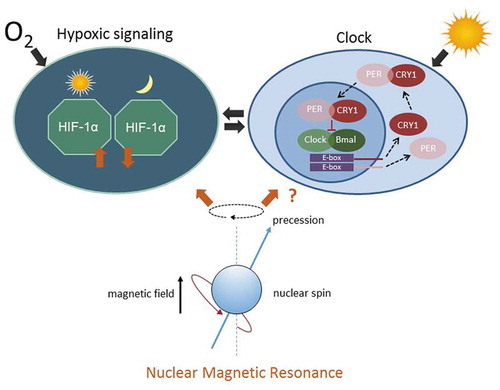Fig. 6
- ID
- ZDB-FIG-220202-19
- Publication
- Thöni et al., 2021 - Therapeutic Nuclear Magnetic Resonance affects the core clock mechanism and associated Hypoxia-inducible factor-1
- Other Figures
- All Figure Page
- Back to All Figure Page
|
tNMR affects the cell autonomous clocks and hypoxic signaling in mammalian cells: Hypoxic signaling and the circadian clock are bi-directionally intertwined (Adamovich et al. 2016; Egg et al. 2013, 2014; Manella et al. 2020; Peek et al. 2016; Sandbichler et al. 2018; Wu et al. 2016). The hypoxic response is clock controlled and depends on the time of day (left). The circadian clock, in turn, is modulated by HIF-1α according to the available oxygen (right). The interaction between both cell circuits is indicated by the two arrows in the middle. tNMR affects both pathways, leading to up or down regulation of the respective genes and proteins, depending on the dose of irradiation. In unsynchronized mouse fibroblasts, tNMR does not induce expression of rhythmicity |

